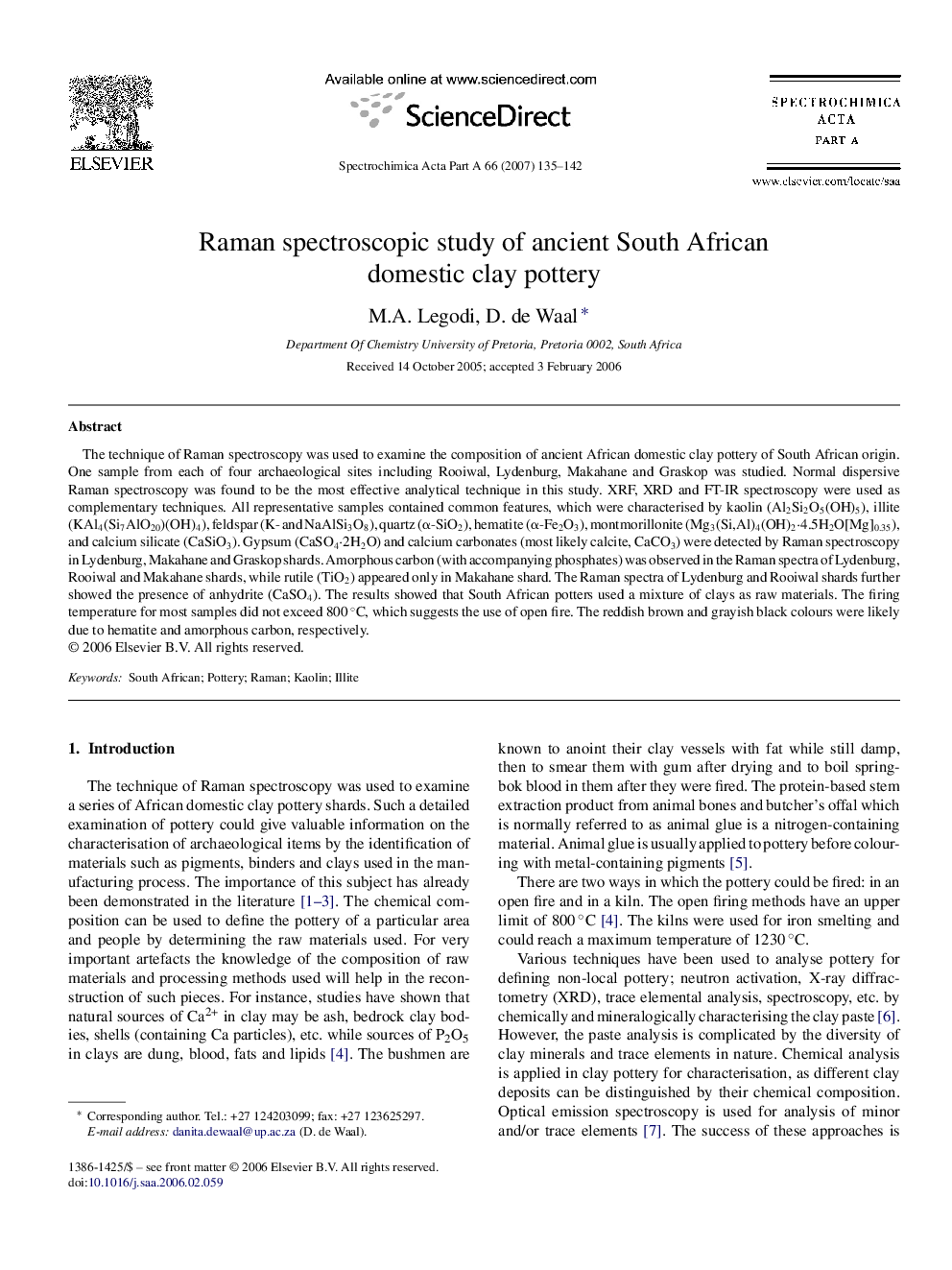| Article ID | Journal | Published Year | Pages | File Type |
|---|---|---|---|---|
| 1236129 | Spectrochimica Acta Part A: Molecular and Biomolecular Spectroscopy | 2007 | 8 Pages |
The technique of Raman spectroscopy was used to examine the composition of ancient African domestic clay pottery of South African origin. One sample from each of four archaeological sites including Rooiwal, Lydenburg, Makahane and Graskop was studied. Normal dispersive Raman spectroscopy was found to be the most effective analytical technique in this study. XRF, XRD and FT-IR spectroscopy were used as complementary techniques. All representative samples contained common features, which were characterised by kaolin (Al2Si2O5(OH)5), illite (KAl4(Si7AlO20)(OH)4), feldspar (K- and NaAlSi3O8), quartz (α-SiO2), hematite (α-Fe2O3), montmorillonite (Mg3(Si,Al)4(OH)2·4.5H2O[Mg]0.35), and calcium silicate (CaSiO3). Gypsum (CaSO4·2H2O) and calcium carbonates (most likely calcite, CaCO3) were detected by Raman spectroscopy in Lydenburg, Makahane and Graskop shards. Amorphous carbon (with accompanying phosphates) was observed in the Raman spectra of Lydenburg, Rooiwal and Makahane shards, while rutile (TiO2) appeared only in Makahane shard. The Raman spectra of Lydenburg and Rooiwal shards further showed the presence of anhydrite (CaSO4). The results showed that South African potters used a mixture of clays as raw materials. The firing temperature for most samples did not exceed 800 °C, which suggests the use of open fire. The reddish brown and grayish black colours were likely due to hematite and amorphous carbon, respectively.
